Lime Kiln
Rotary lime kilns typically have four refractory zones with varying types of refractory. Long process kilns require abrasion resistant, high strength alumina brick for the charging zone. The charging zone is where the abrasion of the stone can be particularly severe. Short preheater kilns normally do not have a charging zone that sees high abrasion as the preheated stone is partially softened.
In the calcining zone, limestone (calcium carbonate) is heated in preparation for the burning zone. 70% alumina class refractory brick is the most common refractory lining. The burning zone maintains the highest temperatures and drives the decarbonization reaction to completion producing quicklime that is, calcium oxide (CaO).
The rate of calcination is related to retention time inside the kiln and the operating temperature. Refractory internals can assist in improving kiln efficiency by recovering heat from the kiln exhaust gas.
This process increases productivity and reduces the fuel ratio for the lime product.
The discharge zone of a modern lime kiln usually contains a dam construction. Dam construction is used to increase the retention time of the lime in the kiln.
Refractories for Lime Kiln
A lime kiln utilizes both basic brick, alumina brick, and fire clay brick. Rescomag 85 is the best basic brick option for harsh conditions within the burning zone. Seneca 60P is the most ideal alumina brick in the calcining zone for abrasion resistance.
Basic Brick Refractory for the Burning Zone:
Basic magnesia brick is more compatible with lime, resist flexing, and offer extended lime rotary kiln lining reliability. Greenfree KF features a high content of spinel and gives significantly lower shell temperatures due to improved thermal conductivity. Rescomag 85 is the best option for harsh conditions within the burning zone.
Alumina Brick
60% to 70% alumina brick linings are the most common brick types in the calcining zones. Rescal 70D offers consistent, economic performance while maintaining good alkali resistance and positive reheat property for improved lining stability. Seneca 60Ps high quality offers improved abrasion resistance at a competitive cost.
Phosphate-bonds give alumina brick high mechanical strength and exceptional abrasion resistance at high temperatures. Alumex P-85-HS is an 80% alumina class burned phosphate-bonded brick. Alumex P-85-HS is effective in charging zones of long rotary lime kilns. Alumex P-85-HS is also effective for the kiln shell linings where heat exchangers are employed.

